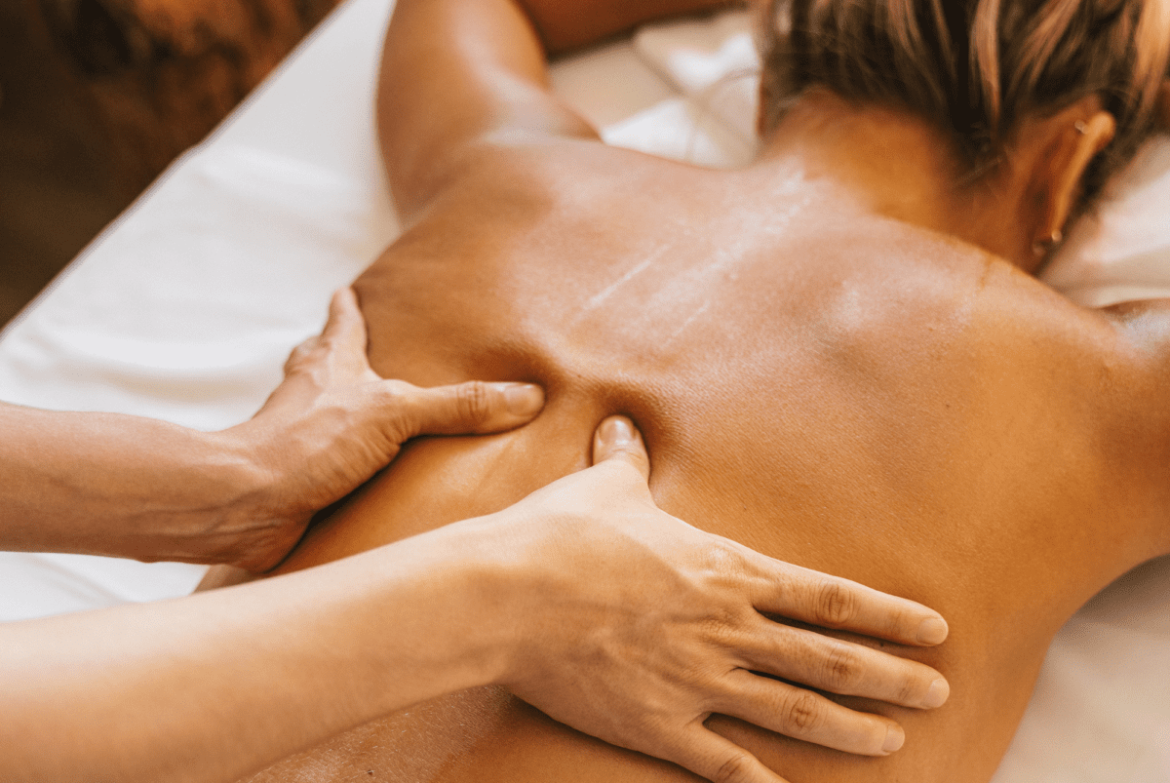Skin and Circulation Effects
Beyond muscles and nerves, massage has visible effects on the skin. Techniques that involve stroking, kneading, or tapping stimulate blood flow, delivering oxygen and nutrients to the skin’s surface. This increased circulation supports natural radiance, encourages detoxification, and can even enhance the effectiveness of topical skincare products applied post-treatment.
Lymphatic drainage, a specialised massage technique, is particularly effective in reducing fluid retention, puffiness, and promoting immune support. UK clients increasingly request treatments that combine relaxation with skin and lymphatic benefits, seeing massage as a holistic wellness ritual rather than a single-purpose service.
Posture, Pain Relief, and Functional Benefits
For those working long hours at desks, commuting, or balancing physical activity, posture-related tension is a common concern. Massage supports alignment by releasing tight fascia, relaxing overworked muscles, and encouraging better movement patterns.
Therapists note that regular massage can reduce the frequency of headaches, neck and back pain, and repetitive strain issues. While massage is not a cure-all, it complements physiotherapy, exercise, and ergonomic adjustments, creating a multi-layered approach to functional wellbeing.
Emotional Release Through Touch
Many clients experience unexpected emotional release during or after sessions. Therapists describe this as “unwinding layers” — the physical act of touch allows stored tension, stress, or trauma to surface, creating a profound sense of relief.
In the UK, mental health awareness has grown, and massage is increasingly recognised as a tool for emotional self-care. While not a substitute for psychotherapy, touch-based therapies can support emotional resilience, enhance relaxation, and foster a deeper connection to the body.
Types of Massage and Their Broader Impact
Different massage styles offer unique benefits beyond muscle relaxation:
-
Swedish Massage: Gentle, rhythmic strokes enhance circulation, promote relaxation, and improve skin tone.
-
Deep Tissue Massage: Targets chronic tension, improves mobility, and may reduce pain associated with overuse or stress.
-
Lymphatic Drainage: Supports immune function, reduces puffiness, and encourages detoxification.
-
Aromatherapy Massage: Combines touch with essential oils, adding mood-enhancing and skin-soothing effects.
-
Hot Stone and Thermal Massage: Improves circulation, eases stiffness, and promotes profound relaxation.
Each technique interacts with multiple systems — nervous, circulatory, lymphatic, and integumentary — illustrating that massage is truly holistic.
Frequency and Integration
Therapists recommend frequency based on individual needs. For general wellness, monthly or bi-weekly sessions may suffice, while those managing chronic pain or high-stress lifestyles may benefit from weekly appointments.
Integration with other wellness practices — stretching, yoga, meditation, or skincare — amplifies benefits. UK clients increasingly view massage as part of a larger self-care strategy, rather than a standalone luxury.
Technology and Massage in 2025
While traditional manual techniques remain central, technology is enhancing massage offerings. Devices like percussive massagers, heated rollers, and AI-guided tools provide clients with complementary options at home. However, therapists emphasise that the intuitive skill, pressure adjustment, and emotional connection of a trained professional cannot be fully replicated by technology.
Client Insights and Experiences
Many UK clients describe massage as transformative. Beyond the immediate relaxation, regular sessions create a rhythm of self-care that improves sleep, reduces stress-related symptoms, and enhances confidence. This broader impact underscores the shift from viewing massage as a purely physical intervention to recognising it as a cornerstone of holistic wellbeing.
Professional Guidance
Choosing the right therapist is essential. Qualified practitioners assess medical history, current physical condition, and lifestyle factors before designing a treatment plan. They also provide guidance for at-home practices, such as stretching, hydration, and posture adjustments, reinforcing long-term benefits.
Conclusion
Massage in 2025 is more than a luxury; it is a multifaceted wellness tool with profound effects on body, mind, and skin. UK therapists highlight that the benefits extend far beyond sore muscles, influencing circulation, emotional health, lymphatic function, and overall vitality.
By integrating massage into a comprehensive self-care routine — supported by professional guidance, lifestyle practices, and mindful attention — clients can experience enhanced relaxation, resilience, and holistic wellbeing. Touch, when applied thoughtfully and skillfully, becomes a language of care, healing, and rejuvenation — proving that massage truly impacts more than just muscles.
In the modern wellness landscape, investing in massage is an investment in the full spectrum of health: physical, emotional, and skin vitality. It’s a reminder that beauty and wellness are deeply interconnected, and that the simplest acts of care can produce profound, far-reaching effects.

